#Miyagawa-cho
Explore tagged Tumblr posts
Video
Traditional Dance by walkkyoto Via Flickr: 祇園小唄 宮川町 川久 舞妓 叶朋 Kanatomo
6 notes
·
View notes
Photo
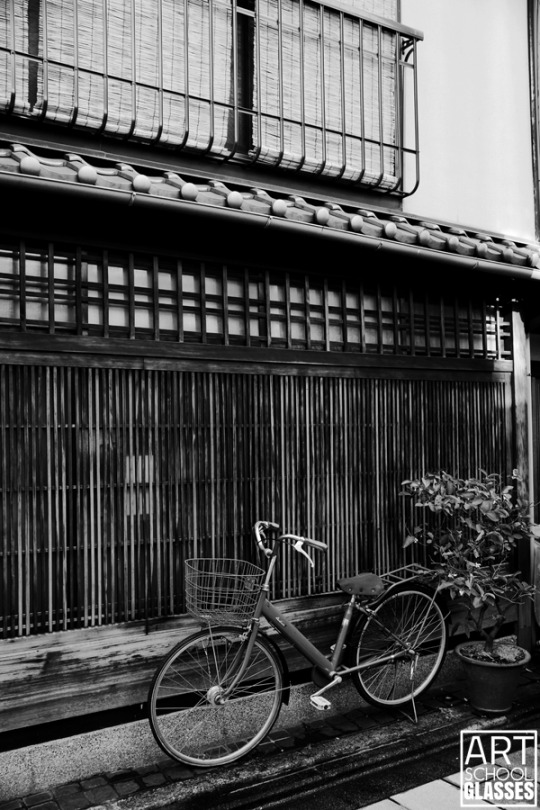
Wandering around Miyagawa-cho
Kyoto, Japan
#miyagawacho#miyagawa-cho#kyoto#japan#asia#travel#travelling#bike#city#street#hanamachi#gokagai#my photos
5 notes
·
View notes
Text
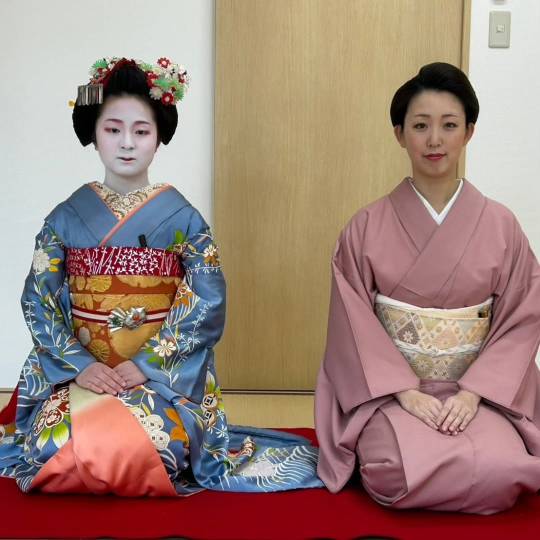
January 31st, 2025: A new minarai has emerged! Miekinu (美恵絹) of Kawayoshi (河よ志) in Miyagawa Cho has begun her minarai period and is currently on the path to becoming a maiko. Since Kawayoshi's atotori, Fukue (ふく恵), is now retired they needed someone to become onesan to their new shikomi, so they chose the ever talented Miehina (美恵雛) of Harutomi (春富) to fill this role. This is Miehina's first imōto and Kawayoshi's first debut in nine years! Miekinu's misedashi will be taking place in February ^^ Image courtesy of Kawayoshi Okiya.
#maiko#geiko#geisha#kyoto#news#minarai#miyagawa cho#kawayoshi#miekinu#舞妓#芸妓#芸者#京都#ニューズ#見習い#宮川町#河よ志#美恵絹
67 notes
·
View notes
Video
youtube
Folhas de Outono do Santuário Okuni
#youtube#Santuário Okuni#Folhas de outono do Santuário de Okuni#rio Miyagawa#folhas de outono#guia japão#japão#mori-cho#japão santuário#japão folhas de outono#@guiajapao#@todos#@destacar#todos#destacar
0 notes
Text

Miyagawa-cho, Yokohama city, Kanagawa pref.
August, 17th, 2024
#leica#photographers on tumblr#black and white photography#original photographers#street photography#light and shadow#cafe#jazz
47 notes
·
View notes
Text
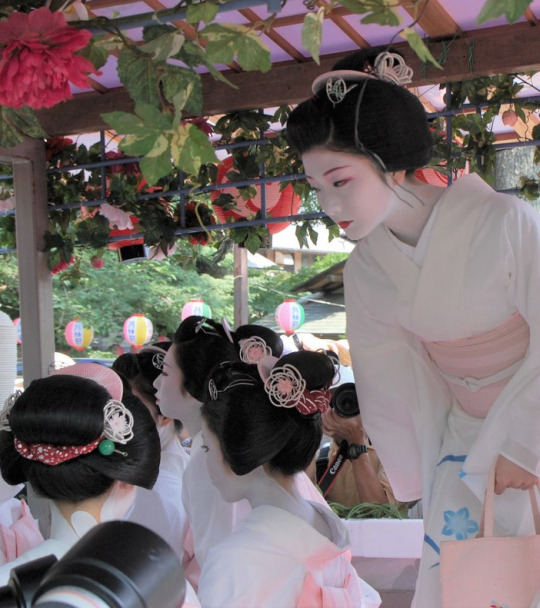
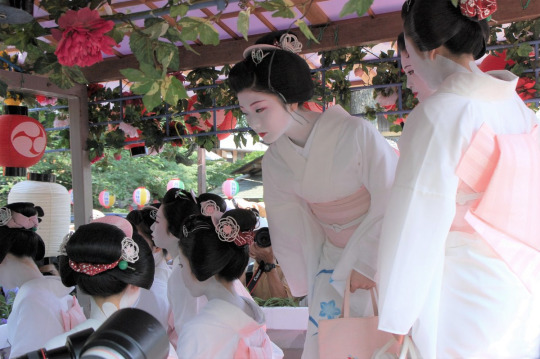
Gion Festival Hanagasa parade, Maiko of Katsuyamamage in Miyagawa-cho., Japan. Photography by Ryohei Masawaki
268 notes
·
View notes
Note
random question; im a cosplayer and im making a kyoshi warrior, specifically suki, costume. when you were drawing everyone in the kyoshi uniform were you using any historical reference? ive been using samurai armour as a jumping off point but want to take inspiration from other sources as well. your art is gorgeous! i like the level of detail you add to everyone's designs and aspire to be that good at costume design
thank you! with samurai armor you are preatty much set. kyoshi doesn't have much or a cultural fusuion like other avatar nation have. (japanese and ainu) i was already used in how to draw samurai like armor form previous fandomse when i drew the kyoshi warrior series. so i regrett to say i didn't check or do much reschearch for it. mostly just flashed out what canon gave us by giving it a bit more detail. i would recomend now looking at Geiko Fukuteru of Miyagawa-cho portrayal of the female warrior, Tomoe Gozen, in Jidai Matsuri (Festival of Ages) not sure if images like these were a reference for the atla creators back then already but it has kyoshi warriors similarities.
28 notes
·
View notes
Text

Geisha Kikumaru of Miyagawa-cho, 2003, Kyoto, Japan. Photographer John Paul Foster.
0 notes
Video
kimika por Watanabe san Por Flickr: maiko
14 notes
·
View notes
Video
Traditional Dance by walkkyoto Via Flickr: 2017.3.25 姫三社 宮川町 駒屋 舞妓 とし桃
132 notes
·
View notes
Video
Debute by walkkyoto Via Flickr: 見世出し Fukuyuri has debuted as a Maiko from Horiyae of Miyagawa-cho on Jan. 22th. 宮川町 堀八重 舞妓 ふく友梨 Fukuyuri EF 135mm f2L USM
1 note
·
View note
Text

I posted 306 times in 2022
186 posts created (61%)
120 posts reblogged (39%)
Blogs I reblogged the most:
@talesofedo
@hakuouki-history
@tanuki-kimono
@shinsengumidreams
@pmk-love
I tagged 304 of my posts in 2022
Only 1% of my posts had no tags
#translated - 87 posts
#hijikata - 75 posts
#translated from japanese - 69 posts
#quote - 63 posts
#hijikata quote - 58 posts
#poem - 46 posts
#series - 44 posts
#fushigidono - 41 posts
#shinsengumi - 35 posts
#recommended - 28 posts
My Top Posts in 2022:
#5
When did the shinsengumi start wearing western uniforms?
That would be on Pants Day 😂
On March 22, 1868, the Shinsengumi spent 13 ryō 2 bu on pants from Nakamuraya Sahei. A few days before, on March 17, they spent 6 ryo 2 bu on jackets.
nachtic:
Purchased jackets on March 17, 1868 (6 ryo 2 bu) Purchased pants on March 22, 1868 (13 ryo 2 bu) According to one theory, the price of 1 ryo at the end of the Edo period, converted from the price of rice, was said to be around 3000-4000 yen, so the jackets would be about 20000 yen and pants about 40000 yen. For comparison, the price of a school uniform now is around 30000 yen.
The only artifact I could find is Nagakura's waistcoat:
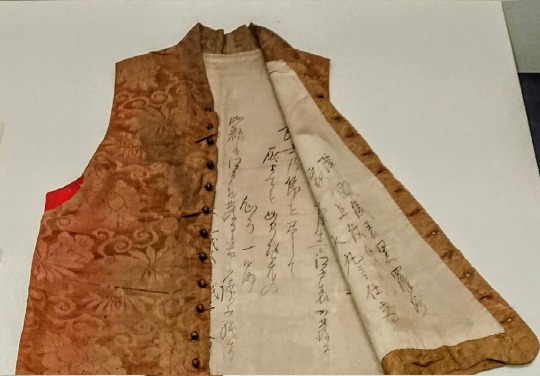
See the full post
42 notes - Posted July 2, 2022
#4

Living descendants of the Shinsengumi
From left to right: Hijikata Megumi (土方愛), Miyagawa Kiyoshi (宮川清志), Miyagawa Seizo (宮川清蔵), Matsudaira Yasuhisa (松平保久), Ano Noriko (阿野典子), Inoue Masao (井上雅雄) (Photo: Kawai Hidenao)
Descendants of Kondo Isami’s family
See the full post
45 notes - Posted March 27, 2022
#3
What did the Shinsengumi eat every day?
Such a trivial matter is unexpectedly difficult to figure out.
It's probably because there wasn't anyone in or around the squad trying to keep a record of their mundane everyday life aside from the big events. When I introduced "The food diary of a low-ranking samurai who was assigned to work alone at the end of the Edo period" last time, I looked it up again, but I couldn't find any information that seemed certain.
That said, it’s not that there are no clues. Here are some of the things I noticed.
Misozuke (miso pickles)

There is a letter from Souji Okita to Miyagawa Otogoro (the brother of Kondo Isami) dated November 12, Keio 3. The passage, "Above all, thank you very much for sending me this delicious misozuke." was an acknowledgment for receiving misozuke.
This misozuke seems to have been made by Otogoro and brought to Kyoto by Hijikata Toshizo and Inoue Genzaburo, who went on a business trip to Edo. It must have been a favorite of Okita (or everyone including Kondo et al.), because they bothered to bring it all the way back from Edo.
Unfortunately, there is no mention of what was pickled. Vegetables, fish, or something else... just imagine.
(* Reference “Complete Letters of Hijikata Toshizo and Okita Souji”)
Duck
See the full post
56 notes - Posted February 18, 2022
#2
The Ruins of Kondo Isami's Dojo
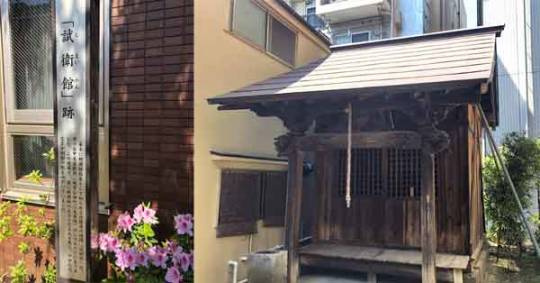
The Shieikan Dojo is the site of Kondo Isami's Tennen Rishin-ryu dojo in Shinjuku Ward.
Currently, only the pillar and the nearby Inari Shrine remain. In this article, we will take a look at the ruins of the Shieikan.
Directions
Address: 25 Ichigaya’yanagi-cho, Shinjuku-ku, Tokyo
How to get there: 3 minute walk from Ushigome Yanagimachi Station on the Oedo Line
See the full post
61 notes - Posted February 3, 2022
My #1 post of 2022
The Gold and Silver Expenditure and Receipt Book (金銀出��帳)
The "Gold and Silver Expenditure and Receipt Book" is a record of the Shinsengumi’s receipts and disbursements, covering the period from the 14th day of the 11th month, Keio 3 (1867) to the 1st day of the 3rd month, Keio 4 (1868). It is approximately ten pages in length and is written in a unique ink script. This record is thought to have been written down by Shinsengumi accountants, and is one of the most valuable official documents of the Shinsengumi for understanding their exact activities and financial situation.
A portion of this document was once published in "Shinsengumi Shimatsuki" (written by Shimozawa Kan in 1928). Until around 1937, it was in the possession of Kondo Isami’s relative, Miyagawa Takashi, who lived in Kamiishihara, Chofu, Tokyo. It’s now kept at Ryugenji Temple (6-chome, Osawa, Mitaka, Tokyo), the site of Kondo Isami’s tomb, along with many other related documents once owned by the Miyagawa family.
The first part of this document is marked with "Start". It then describes the movement of money within the accounting division, and the four people whose names appear in the document, Yasutomi Saisuke, Kishijima Yoshitaro, Otani Isao, and Nakamura Gendo are of course Shinsengumi accountants.
The accountants were usually in charge of bookkeeping, but in times of war, such as the Battle of Toba-Fushimi, they were also assigned to the the logistics division (konida). Yasutomi and Kishijima worked as investigators (諸士調役) (also called "metsuke"), while Otani and Nakamura were treated as the same level as corporals. Some records refer to Otani as an accountant and Nakamura as an equivalent of an accountant.
(source: 新選組史料集)
Out of all the historical texts in 新選組史料集, the Shinsengumi’s account book seemed the most interesting to me, and I kept seeing quotes from it in the articles I’ve read.
It took a while to make sense of the archaic terms and Edo period accounting notation, but I think I’ve mostly figured it out. Here’s my translation: [link], and below are my translation notes and the full original text.
[Read the full translation here]
Translation Notes
一金...也 = formal notation used to clarify and confirm that the money will indeed be paid. Ignore this when translating. (source)
也 = classical modal particle used at the end of sentences to express an explanation or judgement. Ignore this when translating. (source)
右 = classical term of respect. Ignore this when translating. (source)
ニて (にて) = indicates the location where something took place. Ignore this when translating.
江 = river? (not sure why it’s added to some of the entries, but makes more sense to ignore this when translating)
同 = same 一同...也 = 一金...也 同人 = same person as the previous entry
両 = ryo (see: how much was 1 ryo worth?)
分 = bu (1/4 of a ryo)
朱 = shu (1/16 of a ryo)
代 = fee
渡 = transferred
相渡 = handover, transferring from one party to another
手宛 = salary
地役 = easement (the right to use someone else's land for a specific purpose) (source)
入用 = necessary uses
御用 = official duties
帰ル = returned
拾 = ten
廿 = twenty
卯 = year of the rabbit (1867 in this case)
See the full post
74 notes - Posted August 6, 2022
Get your Tumblr 2022 Year in Review →
2 notes
·
View notes
Text
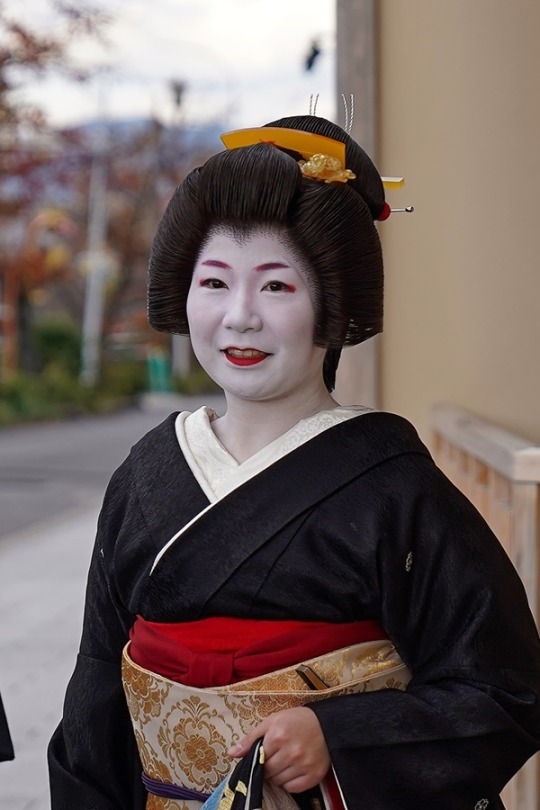
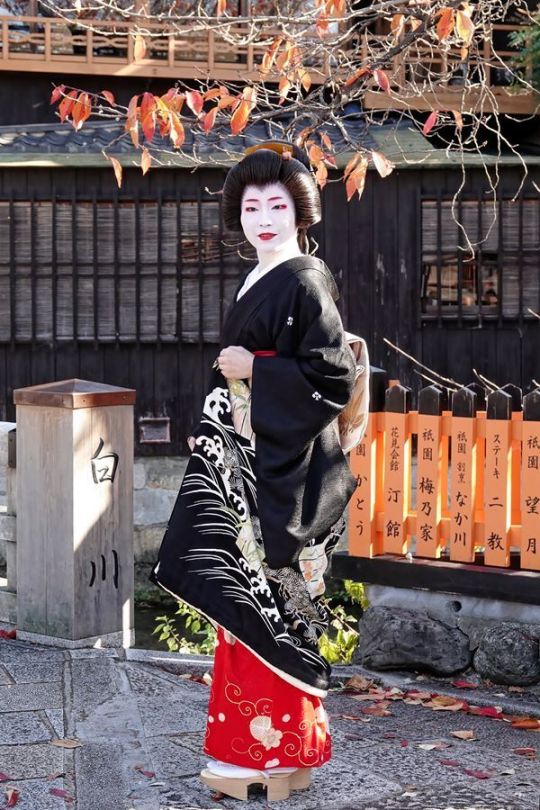
December 5th and 7th, 2024: Double congratulations are in order for two new geiko! Kohatsu (小はつ) of Shigemori (しげ森) in Miyagawa Cho and Haruchizu (櫻千鶴) of Tama (多麻) in Gion Kobu are celebrating their erikae! Kohatsu is the second imōto of Kofuku (小ふく), also of Shigemori, to have her erikae while Haruchizu, who is the imōto of Mamechizu (豆千鶴) of Nomura (野村), is the third of Mamechizu's imōto to have her erikae. Both women have been preparing for this day for a while and suit the geiko look so well! Kohatsu's ensemble features poems among rice sheaths with a golden karabana obi while Haruchizu's ensemble features genjikō, pine, and plum blossoms with a golden bamboo obi ^^ おめでとうさんどす小はつさんと櫻千鶴さん ^o^! Images are courtesy of Ono No Komachi [1] [2].
#maiko#geiko#geisha#kyoto#news#erikae#gion kobu#tama#haruchizu#miyagawa cho#shigemori#kohatsu#舞妓#芸妓#芸者#京都#ニューズ#襟替え#衿替え#ゑりかへ#祇園甲部#多麻#櫻千鶴#宮川町#しげ森#小はつ
76 notes
·
View notes
Text
Yoroshuu otano moshimasu! Welcome to my personal diary. This is where I may keep more intimate accounts of my lifestyle in SecondLife.
I recently packed my bags and traveled into Miyagawa-cho, Kyoto, to train as an apprentice geisha. (They are called geiko, here). I'm still getting settled in. The okamisan is very nice. She is a geiko named Toshiha. There is another geiko in the house named Toshinami. She is very sweet and encouraging. The maiko in the house are Toshimomo and Toshiyue. There are also other shikomi and girls, just like me, who are new. So, I am not learning all of this on my own.
There's a lot you learn quickly coming into this world. That is, how to speak with members of the karyukai and address each other. I have to learn to wear kimono very well, since they are worn every day. Kimono are very traditional Japanese clothing. Ordinary Japanese people only really wear them occasionally.
There is a two week long festival in Kyoto called the "Gion Matsuri." Today, I attended a festival at the Yasaka shrine. There were many performers wearing a special hairstyle called "Katsuyama."
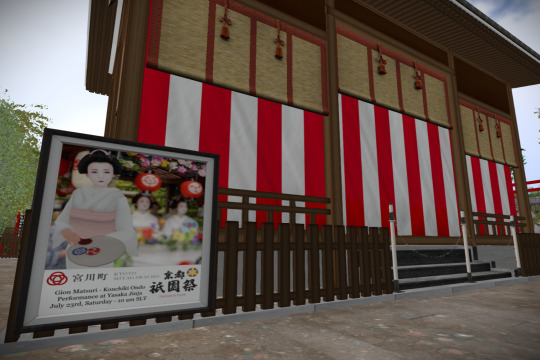
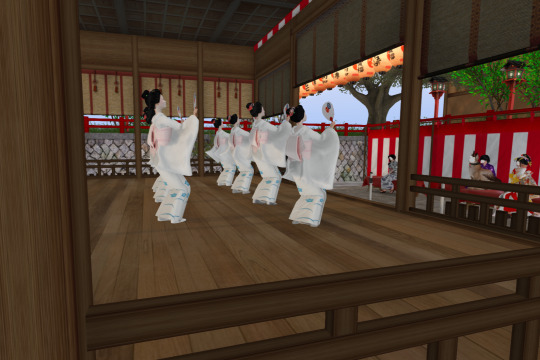
2 notes
·
View notes
Text

Miyagawa-cho, Yokohama city, Kanagawa pref.
August, 3rd, 2024
#leica#photographers on tumblr#original photographers#black and white photography#street photography#light and shadow#river#standuppaddle
19 notes
·
View notes
